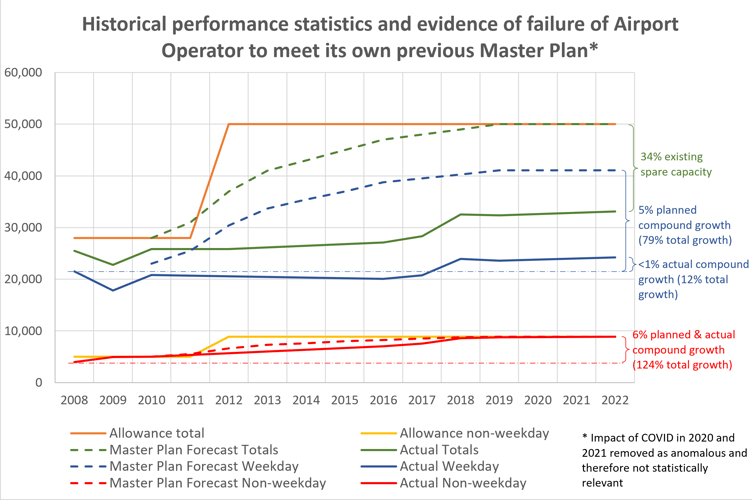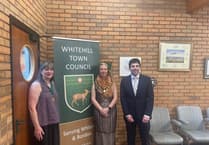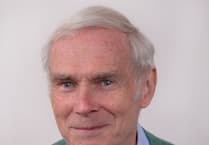The centre page article in last week’s paper Q&A: Farnborough Airport CEO lifts the lid on flight expansion plans will have angered people who have struggled to get their concerns across to decision makers for many years. Farnborough Airport, with its large budgets and professional PR and media consultants does not need another platform to provide its misleading information. The public does.
Let us go through some of the points made by Simon Geere and challenge them with some facts.
First of all, with only 2.5 passengers per plane and 40 per cent of flights being empty, private jets are the most polluting form of travel. In fact, when these factors are included, private jets operating from Farnborough are 30 to 40 times more polluting than a commercial flight (per passenger mile).
The government’s Climate Change Committee has stated that there should be no increase in any airport’s capacity until the aviation industry has started to reduce is emissions. Half of the flights from Farnborough are for leisure purposes – for example the airport launched another service two weeks ago to fly pets to Dubai at £8,000 a seat, one way.
Given the airport is only licensed for business flights, how is that a business flight “generating revenue to the UK”? The airport is used by a very small number of very wealthy people, largely for leisure purposes, who are having a massive impact on the environment in terms of noise, emissions and pollution at the expense of everyone else.
Another comment made by Mr Geere, that the airport is “committed to actively listen to the community’s views” is misleading. Last year MPs wrote to Mr Geere saying they expected better engagement with the public. It hasn’t happened. For years many of the questions submitted by the public to the airport, either directly or through the Consultative Committee (FACC) have been ignored.
Last year the airport went as far as submitting a planning application to enable it to ignore complaints from the public and just a few weeks ago, as the airport’s consultation started, the former chair of Farnborough Noise Group was issued with an Anti Social Behaviour order by Surrey Police stating that he had been “Conducting an aggressive and relentless campaign against Farnborough Airport, the FACC and individuals connected with these organisations over the past 2-3 years”. It is incredible that such bullying tactics, that are clearly intended to undermine opposition to the airport are pursued by a public body and the tax payer’s expense.
Great play is made by the airport that is supports 3,000 of jobs and generates £200 million for the local economy. It would be polite to say this is “misleading”. The numbers quoted are for all the businesses at the airport. The majority have no connection with flight operations. They are HR, IT and other businesses.
In fact, Farnborough Airport Limited employs just 170 people as reported a few days ago in its 2022 HMRC accounts. Of its £98.7m revenue, £47.7m was on fuel sales that carried no tax, £11.7m went as dividends and just £4.7m was paid in corporation tax.
Remember, this business is owned by Macquarie, the business that owned Thames Water and is now the majority shareholder of Southern Water. Macquarie’s business model is to buy businesses, increase their value and sell them on. Maybe the growth plans of the airport should be considered in this context.
Much of the employment in this area and the value generated is due to its proximity to London, good road and rail connections and the many high value businesses in the M3 corridor/Thames Valley area. In fact, only 1/5 of jobs at the airport are people living in the borough of Rushmoor and the majority of jobs are unskilled in catering, cleaning and security (Lichfields Economic Impact Assessment 2022).
Mr Geere also suggests that without expansion, private jets will go elsewhere and that will “make the UK a less attractive place to do business”. He is well aware that countries such as France and Netherlands are reducing the number of private jets operating and it is the UK that is out of step with other countries as the largest use of private jets with nearly one in ten flights now being private jets.
Mr Geere goes on to say the airport is “restricted” to small aircraft for business users that require privacy and immediate access to travel where they want, when they want. Why are most flights to destinations already served by regular commercial flights? Half the destinations the airport serves are holiday destinations in the Alpes (Chambery, Sion, etc) or the Mediterranean (Bodrum, Palma, Ibiza, Nice).
The chart below shows there has been hardly any growth in flights during weekdays while almost all the growth is at weekends. Current flights are at 32,000 a year with a limit of 50,000. At the current growth rate it will be 2085 by the time the airport gets to 50,000 flights so why apply for 70,000?

Why is the airport consulting on flying more of the larger aircraft (e.g. Boeing 737s)? These are aircraft capable of carrying 100 passengers, not small jets for a few business passengers. The airport will never be licenced for scheduled flights so why are more of the larger aircraft needed?
There is also reference made to the government’s proposals to change airspace. This is the Airspace Modernisation Strategy and the public has no idea how it could impact them as it hasn’t been consulted.
The government aims to double aircraft capacity in the south east by 2030. That means two million flights a year. And the flightpaths will be changed so anyone could have a flightpath over them.
What is even worse is that the design principles, that have already been confirmed, plan to put these routes over rural areas. This design principle is the reason why areas like Churt, who used to have a few flights a day, now have a hundred a day flying over them at low height.
What Mr Geere doesn’t tell you is that Farnborough Airport has now joined with Gatwick and Heathrow in designing the new airspace in the south east, so we need to be aware of changes to flightpaths for Gatwick and Heathrow aircraft as well.
To suggest that the airspace changes to double the number of flights is to “reduce carbon emissions” is just ridiculous. Regarding emissions reduction, the airport has reduced its ground-based emissions but since they only account for 1.4 per cent of all emissions (FAL data) and the remaining 98.6 per cent are from aircraft that will increase with more flights, the claim of emissions reduction is false.
If Farnborough Airport had to pay for the removal of emissions it is responsible for, it would cost £25m (2022 Scope 3 emissions - DACC at $250/tonne CO2).
I do agree with Mr Geere when he states “it is a trade-off” between growth in jets and the harm caused to the public. The problem is that all the benefits are for the airport and all the negatives are to the populations near to the airport and further afield.
The article does reference Farnborough’s flightpath changes and the Post Implementation Review (PIR) that was conducted last year. The consultation was appalling with many communities and councils impacted by the changes not being consulted.
The PIR, that has still not been completed, required the airport to measure aircraft noise. This hasn’t happened, despite the CEO of the CAA committing to Jeremy Hunt, in writing, that it would. In fact the airport has gone further by refusing to provide noise monitoring equipment for several years that it is required to provide in the conditions put on it in 2010 when it gained consent as a commercial airport.
For the CEO of Farnborough Airport to say “I wouldn’t have the knowledge base to be able to say” when questioned about the scope of the PIR is also of concern. Farnborough Noise Group has been campaigning for three years to the DfT, the CAA and the airport regarding the scope of the PIR that the airport and the CAA agreed between themselves. All three have said that the others are responsible.
It would be wrong to focus too much on the harm caused by the flightpath changes and the increase in aircraft noise, emissions and pollution. They need to be balanced with the benefits. So where are they? The airport claims that there are areas that have benefitted from the changes in airspace – perhaps it could identify where these areas are and how that has been assessed?
It also claims that airspace has become safer – that is true of controlled airspace but the remaining airspace has become more dangerous with more aircraft compressed into a smaller space and flying lower. That wasn’t considered in the PIR. Nor was the impact of increased pollution and Rushmoor Borough Council should not consider a planning application until suitable pollution monitoring has taken place. And that includes ultrafine particles that are an increasing concern to human health and caused by airport operations.
Farnborough Airport’s “problem” is that it would never get planning consent as a new airport on safety grounds as it is in an urban area with houses, schools and businesses nearby. That makes it even harder to understand why expansion is appropriate.
There is no doubt that this area has significant skills and labour resources that can generate investment and employment but it needs to be in businesses that have a future. Private jets will always be needed for medical repatriation, where there aren’t commercial airports and for security reasons. But the number of private jets operating will have to reduce dramatically if the world is to tackle climate change and the government is to meet its legally binding net zero law.
The airport should be looking to use its current capacity better and Rushmoor Borough Council may want to support sustainable businesses and investments that have a long-term benefit for the area and the planet. A good example is Surrey Satellite Technology who are developing and manufacturing satellites to track wildfires and improve insulation in buildings. This is where our technical resources should be developed.
Farnborough Noise





Comments
This article has no comments yet. Be the first to leave a comment.